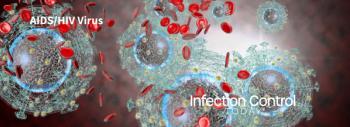
Translating Evidence Into Action is Imperative for Preventing HAIs
By Neil Fishman, MD
The Centers for Disease Control and Prevention (CDC) report detailing state-specific and national central-line associated bloodstream infection (CLABSI) data is a testament to the dedication of infection prevention teams. The reports finding of a nearly 20 percent decrease in national CLABSI incidence is an encouraging step in the progress toward eliminating healthcare-acquired infections (HAIs) and affirms the return on investment in research in best practices and their translation to effective infection prevention at the bedside. [The U.S. Department of Health and Human Services (HHS) Action Plan to Prevent Healthcare-Associated Infections can be accessed at:
With growing activity by policymakers, administrators and consumers around issues of HAI prevention, it is crucial that we have an accurate representation of the national landscape of HAIs. SHEA has long emphasized the importance of standard definitions and data collection methods to ensure consistent and comparable information, pointing to the National Healthcare Safety Network (NHSN) as the best and most accurate resource for this information. The CDC report, based on data submitted by 18 states using NHSN, provides this reliable picture to help healthcare professionals and stakeholders define the scope of the problem, assess progress, and direct future interventions.
Accurate measurement allows us to make more informed decisions about risks and prevention strategies, and SHEA is encouraged by this clear positive progress. But measuring the problem is not enough. We must ensure that evidence-based interventions continue to be implemented into practice, that we apply data to action, and that sound research continues to be the foundation of all such interventions. Our successes further help to demonstrate that the elimination of HAIs requires constant vigilance through accurate collection and measurement, as well as:
Adherence to evidence-based practices through education and investment in implementation.
Investment in knowledge gaps through basic, translational, and epidemiological research.
Financial incentives and reinvestment in the strategies that work.
The cycle of prevention is not complete without rapid translation of evidence into action.
Neil Fishman, MD, is president of SHEA and the director of the Department of Healthcare Epidemiology and Infection Control and the director of the Antimicrobial Management Program for the University of Pennsylvania Health System.
Newsletter
Stay prepared and protected with Infection Control Today's newsletter, delivering essential updates, best practices, and expert insights for infection preventionists.






